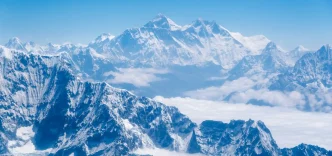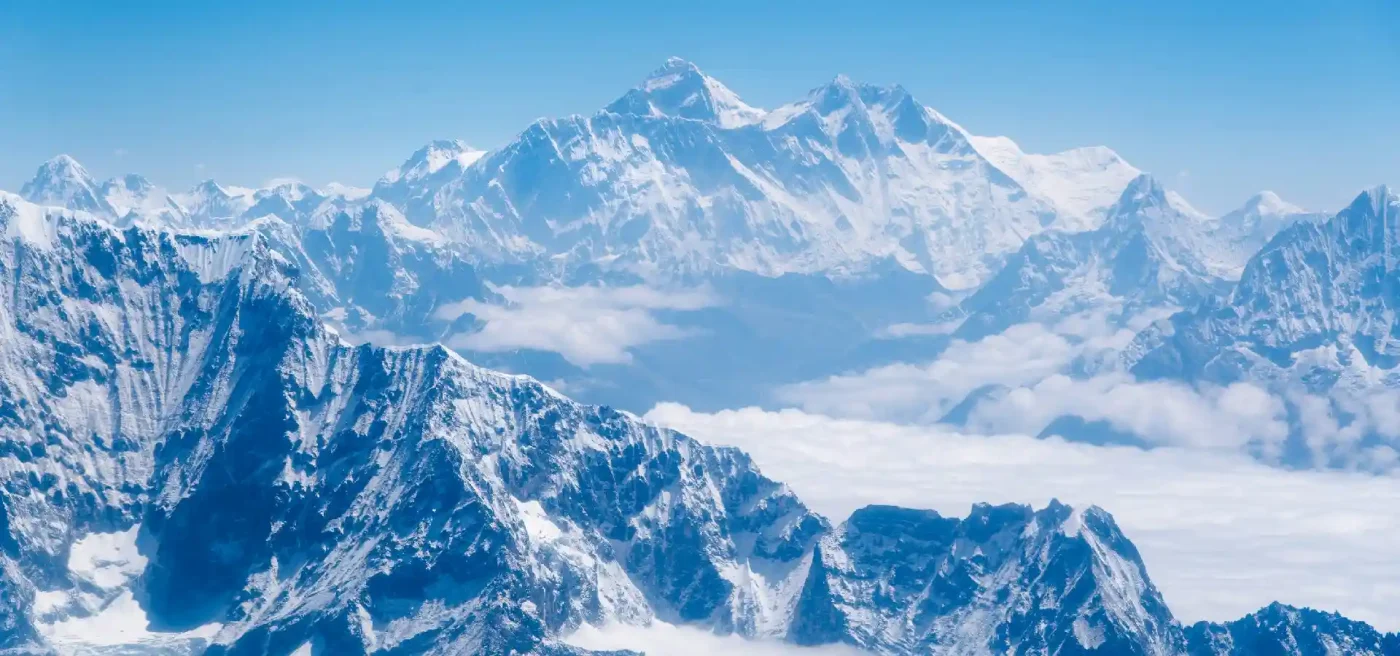The death of a 45-year-old Filipino mountaineer on Mount Everest has cast a somber shadow over the climbing season, reigniting urgent discussions about safety and regulation on the world’s highest peak. Philipp II Santiago succumbed to exhaustion at Camp IV, situated at a staggering altitude of 7,900 meters, late on Wednesday, marking the first recorded fatality of this year’s Everest expeditions in Nepal. As the climbing community mourns, Nepal’s government faces growing pressure to enforce stricter rules to prevent such tragedies.
A Fatal Ascent
Santiago reached Camp IV at approximately 8:00 PM on Wednesday, visibly fatigued after a grueling ascent. According to a press release issued by Nepal’s Department of Tourism on Thursday, he succumbed shortly after arriving at the camp. His body was found at the site, but due to the extreme conditions and logistical challenges posed by the high altitude, his remains have been left at Camp IV for the time being. The harsh environment of Everest’s upper reaches often makes immediate retrieval impossible, a stark reminder of the risks climbers face.
Santiago’s death is a tragic milestone as the first fatality of the 2025 climbing season, though it is far from an isolated incident. Everest has claimed over 300 lives since expeditions began in the early 20th century, with many deaths attributed to exhaustion, altitude sickness, and unpredictable weather. For climbers like Santiago, the dream of summiting the 8,848-meter peak can come at the ultimate cost.
Rising Fatalities Prompt Policy Review
In response to the increasing number of fatalities and near-misses on Everest, Nepal’s government is considering stricter regulations for expeditions. Among the proposed measures are higher permit fees and mandatory experience requirements for climbers. Currently, a permit to climb Everest costs around 11,000 Nepali Rupees (US$82), a fee that critics argue is too low to deter unprepared adventurers. Raising this cost could limit the number of climbers and fund better safety infrastructure, though it risks pricing out climbers from less affluent backgrounds.
More significantly, the government has registered the Integrated Tourism Bill in the upper house of the federal parliament on April 18, 2025. If passed, this legislation would make it mandatory for any climber wishing to summit Everest to have already conquered a peak over 7,000 meters. This requirement aims to ensure that only experienced mountaineers attempt the perilous ascent, potentially reducing the number of fatalities caused by inexperience.
“We are deeply saddened by the loss of life on Everest” said a spokesperson for the Department of Tourism. “These incidents underscore the need for comprehensive reforms to protect climbers and preserve the sanctity of the mountain.”
The Human Cost of Everest’s Allure
Mount Everest, known as Sagarmatha in Nepali and Chomolungma in Tibetan, holds an almost mythical status among adventurers worldwide. Each year, hundreds of climbers flock to Nepal, drawn by the challenge and prestige of standing atop the world’s highest point. Yet, the mountain’s allure comes with a dark side. Overcrowding, particularly in the narrow “death zone” above 8,000 meters where oxygen levels are critically low, has led to bottlenecks and delays that exacerbate exhaustion and exposure risks.
Santiago’s death highlights the personal toll of these dangers. A Filipino national, he joins a growing list of climbers from Southeast Asia and beyond who have lost their lives pursuing this ultimate feat. While little is known publicly about his background or prior climbing experience, his story resonates with many in the region who see Everest as a symbol of human endurance and aspiration.
The decision to leave Santiago’s body at Camp IV, while heartbreaking, is not uncommon. Retrieval missions at such altitudes are extraordinarily dangerous and costly, often requiring specialized teams and risking further lives. Many climbers who perish on Everest remain on the mountain, their bodies preserved by the freezing temperatures, serving as somber markers for future expeditions.
Balancing Access and Safety
Nepal’s proposed regulations have sparked a broader debate within the climbing community about balancing access to Everest with the need for safety. On one hand, stricter rules could save lives by ensuring that only seasoned climbers attempt the summit. Requiring prior experience on a 7,000-meter peak, for instance, would filter out novices who underestimate the physical and mental demands of Everest.
On the other hand, critics argue that such measures could transform Everest into an elitist endeavor, accessible only to those with the financial means and time to scale other high peaks as a prerequisite. Nepal’s economy also relies heavily on Everest tourism, with climbing permits, guiding services, and related industries generating millions of dollars annually. Higher fees or reduced climber numbers could have a ripple effect on local communities in the Solukhumbu region, where many Sherpas and porters depend on the seasonal influx of climbers for their livelihoods.
“Everest should remain a challenge for those willing to train and prepare, not just those who can pay more” said a veteran climber on social media, reflecting a sentiment shared by many in the community. Others, however, counter that safety must take precedence, especially as climate change alters weather patterns and glacier stability on the mountain, adding new layers of risk.
Environmental and Cultural Concerns
Beyond safety, the influx of climbers has raised concerns about the environmental impact on Everest and the surrounding Khumbu region. Trash, abandoned equipment, and human waste litter the mountain, particularly at base camps and along popular routes like the Khumbu Glacier, where Santiago and countless others have trekked. Efforts to clean up the mountain have been ongoing, but the sheer volume of expeditions makes the task daunting.
Culturally, Everest holds profound significance for the Sherpa people, who view it as a sacred space. The commercialization of climbing expeditions has at times clashed with these spiritual values, prompting calls for more respectful and sustainable tourism practices. Stricter regulations could help address these issues by limiting climber numbers and enforcing stricter waste management policies, though implementation remains a challenge.
A Global Conversation
Santiago’s death is not just a Nepali issue; it resonates globally, particularly in the Philippines, where mountaineering is a growing passion. Filipino climbers have increasingly made their mark on international peaks, and Santiago’s tragedy may prompt reflection on training, preparation, and government support for such endeavors. Social media posts from Filipino outdoor enthusiasts express grief and solidarity, with many calling for better safety awareness among aspiring climbers.
International media and climbing organizations have also taken note, with some advocating for a coordinated global approach to high-altitude mountaineering regulations. Everest’s challenges are unique, but the lessons learned could apply to other treacherous peaks worldwide, fostering a safer environment for adventurers everywhere.
Looking Ahead
As Nepal deliberates on the Integrated Tourism Bill and other reforms, the climbing world watches closely. The death of Philipp II Santiago serves as a poignant reminder of the stakes involved in scaling Everest, a pursuit that blends human ambition with nature’s unforgiving power. Whether stricter rules will prevent future tragedies remains uncertain, but the conversation they have sparked is a crucial step toward ensuring that the journey to the top does not come at the cost of life.
For now, the mountain stands silent, its icy slopes bearing witness to both triumph and loss. As the 2025 climbing season unfolds, the hope is that lessons from this tragedy will pave the way for a safer, more sustainable future on Everest.
















